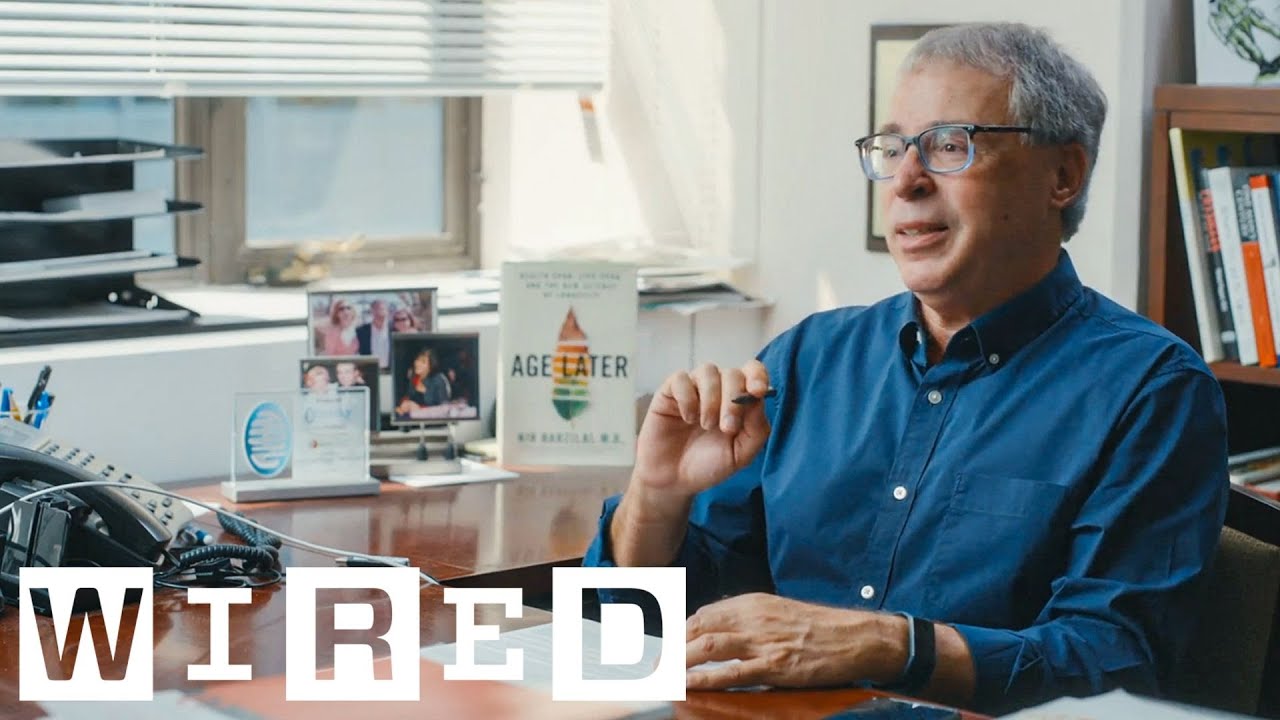Longevity Research: Messy? Futile? What’s The Real Score?
Man’s never-ending quest to extend human lifespan can be traced in legends and seen in paintings. For scientists, they would rather live in a lab to do longevity research than bother with art or some mythical stories.
Author:Rhyley CarneyReviewer:Paula M. GrahamFeb 20, 202243.2K Shares708.2K Views

As hi-tech labs across the globe tirelessly conduct longevity research, artworks at least succeeded first in immortalizing man’s never-ending quest to extend human lifespan.
Tales about the legendary fountain of youth possibly inspired German artist Lucas Cranach, the Elder (1472–1553) to depict it in a 1546 painting. Austrian artist Eduard Veith (1856–1925) painted his own interpretation in 1890.
Unsurprisingly, scientists would rather bury their heads doing lab work for longevity research than bother with art or some mythical stories. However, it couldn’t be helped if once in a while one of their peers would grumble about the whole thing.
New York-based scientist Paul S. Brookes, Ph.D., recently wrote a lengthy post in his blog PSBLAB about how programs, projects, and companies spearheading longevity research should all be filed in one folder marked “mess.”
Long before biotechnology – “technology based on biology,” to put it simply, according to Washington-based biotech organization BIO – inched its way to longevity research, he stressed that “aging science” already got itself in “a messy state with not a great reputation.”
Brookes, who does cardiac mitochondrial research at the University of Rochester Medical Center, expressed little faith that companies will produce a wonder drug of sorts that could prolong lifespan before they run out of funding.
Still, he would like to remain hopeful.
Despite Brookes’ bleak forecast, longevity research continues to thrive this 21st century, even attracting billionaires and venture capitalists to invest on these ambitious and costly medical undertakings.

Longevity Genes | The Future of Ageing | Part 1 | WIRED
Longevity Research Breakthrough
On its website, experts at the American Federation for Aging Research (AFAR) in New York proclaims to be at the forefront when it comes to scientific breakthroughs in longevity research.
Below are some of the recent ones AFAR experts are working on.
Protein Aggregation
Proteins in the human body tend to aggregate or “accumulate and clump together,” according to Wikipedia.
AFAR experts said that some diseases are associated with protein aggregation, such as neurological diseases (e.g., Alzheimer's Disease, Bell's Palsy, epilepsy, etc.). They are working on how to prevent protein aggregation.
Rapamycin
The fact that humans and mice share the same aging processes and the discovery of certain drugs that can prolong the lifespan of mice motivate AFAR experts to formulate drugs that will render similar effects to humans. Rapamycin is one of those drugs already created.
Senescent Cells
It was already proven that senescent cells destroy tissues as people age. How? They secrete “harmful molecules” that cause damage to the tissues surrounding the said cells. AFAR’s good news? Senescent cells “can be removed” from the body.
Young Blood
There are molecules in the blood of young animals that can “rejuvenate damaged heart, brain, and muscle” in older animals, according to AFAR experts. They now work on identifying said molecules and look into the possibility of the human body to have such kinds of molecules with similar capabilities. They plan to employ their findings in treating or preventing heart problems and dementia.
In his March 2021 article for Science Focus, London-based scientist Andrew Steele, Ph.D., shared some longevity research breakthroughs.
Induced Pluripotent Stem Cells (iPSCs)
Combining normal body cells with “a cocktail of four different genes,” said Steele, will produce iPSCs. These iPSCs can now be turned “into fresh eye cells.” Steele predicted that they could be used to treat arthritis and Parkinson's disease in the nearby future.
Telomerase
In the middle of a cell is a nucleus. Inside the nucleus is the DNA (deoxyribonucleic acid), which is “split into” chromosomes, said Steele. The two ends of each chromosome have “a protective region” called the telomere. As people age, these telomeres decrease in length, and the shorter they become, the more people get prone to certain diseases.
Telomerase is an enzyme (a type of protein) that can make the telomeres longer.
The Amish Gene
People with the gene called SERPINE1 – a gene found among the Old Order Amish people living in Indiana in the ‘80s – “lived a full 10 years longer” than people who don’t have it, said Steele.
Scientists now work on SERPINE1 and other single genes that could pave way for longevity.
Thymic Regrowth
In her Verywell Health article, lung cancer doctor Lynne Eldridge highlighted the important role of the thymus gland – located in the chest between the lungs – “in immunity, autoimmunity, and aging.”
Imagine the impact to human health if the thymus starts to decline.
Steel said that drugs, gene therapies, hormones, and stem cells can aid in preventing its decline.
Just in November 2021, EurekAlert! published a news release about the discovery of researchers from the Korean Advanced Institute of Science and Technology (KAIST). The group’s leader said that “by slightly tweaking the activity of one protein, PTEN,” could lead to better health and longevity. PTEN (phosphatase and tensin homolog) is described as a “tumor suppressor protein.”
What Is The Expected Longevity Of Life?
Per United Nations data, 72.81 years is the world life expectancy this 2021, according to Macrotrends.
That’s a year shorter than the 73.2 years (for both sexes, with 70.8 years for males; 75.6 years, females) mentioned by Worldometer.
Peer-reviewed journal Nature Communications, according to Scientific American, published in May 2021 the findings of some researchers, who concluded that humans can live up to 150 years. The maximum range they set was between 120 and 150 years.
At age 122, Jeanne Louise Calment (1875–1997) from France – she’s 10 when the first motor car was invented – was the oldest person who lived (documented, at least).
In 2017, Emma Martina Luigia Morano from Italy died at the age of 117.

Gravitas | Study: Humans can live up to 150 years
Is It Scientifically Possible To Stop Aging?
William Shakespeare once compared old age to a “hideous winter.”
For 57-year-old Jeff Bezos, however, old age seemed to be a hot topic worth spending a fortune on.
MIT Technology Review reported that the billionaire Amazon founder and former CEO likely invested in Altos Labs, an “anti-aging company” in Paris, which also plans to establish a presence in California and Japan.
Juan Carlos Izpisua Belmonte from the Salk Institute for Biological Studies in California is rumored to be hired by Altos Labs for its longevity research.
The Spanish biologist and biochemist Belmonte once headed a group of researchers where they explored cellular reprogramming, according to Pharmaceutical Technology. Their study, published in 2016, revealed that cellular reprogramming could diminish indications of cellular aging in mice and add “an average of six weeks” in their lifespan.
Still, we’re talking about mice here, not humans.
In his article for The Hill, reporter Christian Spencer stated that the “anti-aging industry,” approximately worth $110 billion, according to The Guardian, “may be a lost cause.”
To some extent, that’s what Spencer’s fellow New Yorker Paul S. Brookes was lamenting about in his blog.
Spencer and The Guardian cited the results of a study published by Nature Communications in June 2021, which proved that due to “biological constraints,” nothing can stop humans from aging.
José Manuel Aburto, a demographer at the University of Oxford and one of the study’s researchers, said to the Guardian that biological factors and not environmental ones “ultimately control longevity.”
By 2025 – just barely four years from now – The Guardian said that the projected worth of the world’s anti-aging industry could balloon to $610 billion.
After naming more than two dozen companies (several located in California), Brookes estimated that these so-called longevity companies could be “more than 100.”
Aside from Alto Labs, similar companies include Booster Therapeutics (Berlin), the Buck Institute for Research on Aging (California), Centaura (Zurich), GlycanAge (London), Juvenescence (Dublin), Longevity Biotech (Philadelphia), Oisin Biotechnologies (Washington), and Shift Bioscience (Cambridge, U.K.).
Conclusion
With a long list of longevity companies that have mushroomed throughout the years, it could be expected that longevity research would continue to grow.
The anti-aging research also depends on the breakthroughs that will arise and, of course, the money that will fund such grand scientific initiatives.
Nevertheless, when it comes to aging and longevity, perhaps it’s simply a matter of one’s perspective.
In his Hacker News comment, California-based software engineer Ian Danforth, who’s into artificial intelligence research, mentioned two kinds of mindsets.
One that tells “‘death from old age is natural and to be accepted.’” Another one that says “‘death from old age is preventable and tragic.’”
With all the longevity research currently going on, these two opposing mindsets could pose a dilemma to people in general and to the scientific community in particular.
How about you? Which of the two mindsets would you like to hold on to?

Rhyley Carney
Author

Paula M. Graham
Reviewer
Latest Articles
Popular Articles



